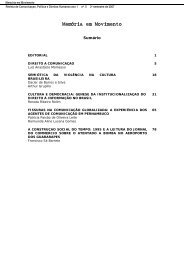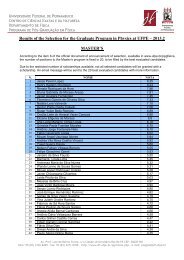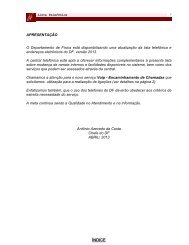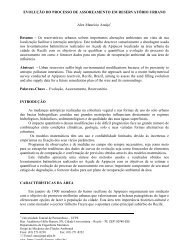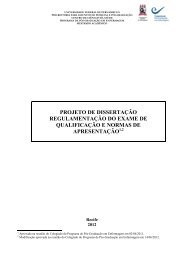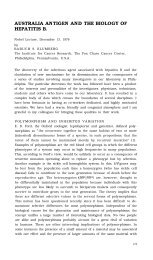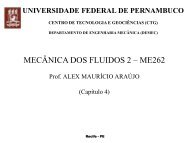View - ResearchGate
View - ResearchGate
View - ResearchGate
You also want an ePaper? Increase the reach of your titles
YUMPU automatically turns print PDFs into web optimized ePapers that Google loves.
440 A.N. Sial et al. / Gondwana Research 13 (2008) 437–452<br />
Fig. 3. Cambrian stratigraphic record of the Argentine Precordillera, grouping stratigraphic successions into an inner platform, slope-outer and mixed zone. The names<br />
of olistoliths correspond on the localities where they are found. Laurentia chronology (modified from Bordonaro, 2003a).<br />
disturbance and its upper boundary is drawn at the transition<br />
between limestones and dolomites of the Zonda Formation<br />
(Bordonaro, 1980). In the Quebrada de Zonda section, four<br />
members are recognized in the La Laja Formation with a total<br />
thickness of about 1400 m. These are the El Estero Member,<br />
Early Cambrian in age (Olenellus Zone), composed of<br />
sandstone, shale, marl and grainstone; the Soldano Member,<br />
Late Middle Cambrian in age (Ehmaniella Zone), composed of<br />
limestone, mudstone and marl; the Bernadino Rivadavia<br />
Member (upper Ehmaniella-lower Bolaspidella Zones), Upper<br />
Middle Cambrian in age, consists of homogeneous black<br />
limestone; and the Juan Pobre Member, Upper Middle<br />
Cambrian (Bolaspidella Zone) in age, composed of interbedded<br />
oolitic and black limestones. The lower boundary of the El<br />
Estero Member is not exposed due to faulting, and contains only<br />
trace fossils but no diagnostic shelly fauna.<br />
2.2. Upper Cambrian<br />
The Cerro La Silla section, located 150 km to the north of the<br />
San Juan Town (Fig. 2), represents a significant outcrop of<br />
Cambrian rocks in the Central Precordillera. This section<br />
includes a thick Late Cambrian to Early Ordovician westwarddipping<br />
carbonate sequence, which comprises the Zonda, La<br />
Flecha, La Silla and San Juan Formations. Elsewhere, the latter<br />
is unconformably overlain by siliciclastic Upper Ordovician or<br />
Silurian deposits (Fig. 4a).<br />
The La Flecha Formation is almost totally composed of<br />
small-scale, shallowing upward cycles (1–5 m) and exhibits a<br />
great variety of domal stromatolites and cryptalgal laminites<br />
(Fig. 4b), together with subtidal to supratidal lithotypes as well<br />
as oolite beds (Keller, 1999; Keller et al., 1994). A large amount<br />
of chert and chalcedony replaced locally the biogenic structures<br />
assigned to Thalassinoides isp (Fig. 4c). This ichnogenera is<br />
referred to feeding structures of living decapod crustacea, and is<br />
representative of intertidal to the upper part of the subtidal zone<br />
in the marine environment (Ekdale et al., 1984). The shallowing<br />
upward cycles are peritidal in origin and consist of small-scale,<br />
stacked successions (Baldis et al., 1981; Keller et al., 1994).<br />
The Cerro La Silla is the type locality for the Silla Formation<br />
where this formation is 350 m thick and ranges in age from the<br />
Uppermost Cambrian to the Earliest Tremadoc (Keller et al.,<br />
1994). This Formation is predominantly calcareous with<br />
dolomite mainly in sparse biolaminated horizons. The succession<br />
is composed of an alternation of peloidal grainstones,<br />
intraclast grainstones and mudstones with abundant bioturbation.<br />
Distribution of facies seems to be random and no cycle or<br />
sedimentary rhythm could be demonstrated to date (Keller,



